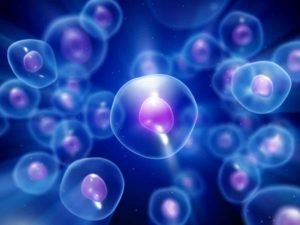The prospect of medical treatments that turn back the clock for humans is a little closer
Researchers in the United States treated healthy animals with gene therapy that regenerates old cells.
The experiment made the animals younger according to biological markers used to measure the effects of aging.
The trick isn’t easy to replicate in humans, but the findings fuel interest in radical new therapies.
The therapies will be aimed at slowing or reversing the aging process as a means of combating age-related diseases such as cancer, brittle bones and Alzheimer’s.
“Many age-related diseases could benefit from this approach,” said Heinrich Jasper, chief scientist and director of US biotech firm Genentech.
Yamanaka factors.
The scientists built on previous work by Japanese Nobel laureate Professor Shinya Yamanaka.
In his work he showed that a mixture of four molecules known as Yamanaka factors.
It can transform adult cells into young stem cells that can form almost any tissue in the body.
In the journal Nature Aging, a US team led by Jasper and Professor Juan Carlos Izpisua Belmonte of the Salk Institute in California and the San Diego Altos Institute.
They found that mice that received Yamanaka factors for several months resembled young animals in many ways.
Their skin and kidneys especially show signs of rejuvenation.

“Will it ever be used in humans?” said Dr. Tamir Chandra, an expert in the biology of aging at the University of Edinburgh who was not involved in the research.
“Theoretically, biological age can be changed or reduced.
However, we are at a very early stage where we need to better understand the underlying science.
“Using Yamanaka factors carries the risk of causing cancer, and unlike mice, because humans live longer and have more mutations, they are already predisposed to developing cancer.
Now that we know that the loss of cell identity and changes in age can be distinct in their trajectories.
Other groups are trying to find new factors that separate the loss of cell identity from the effects of rejuvenation.
Human Reseach
Researchers have reversed the aging of human skin cells by 30 years, according to a new study.
Scientists say they’ve developed a method to jump-start human skin cells by three decade.
This method has shown effects longer than previous reprogramming methods, reversing the aging clock without the cells function loss.
The researchers describe being able to partially restore the function of older cells, as well as renew biological age.
According to the study, in experiments simulating a skin wound, partially rejuvenated cells showed signs of behaving more like young cells.
Experts say the early findings could eventually revolutionize regenerative medicine, especially if it can be replicated in other cell types.
Professor Wolf Reik, Group Leader of the Epigenetics Research Program, who recently moved to lead the Altos Labs Cambridge Institute, said:
“This work has very exciting implications. “Ultimately, we will be able to identify genes that rejuvenate without reprogramming, and specifically genes that are targeted to reduce the effects of aging.
“This approach holds promise for valuable discoveries that could open up a wonderful therapeutic horizon.”
“Our findings represent a major step forward in our understanding of cellular reprogramming,” said Dr Diljeet Gill, a postdoctoral researcher in Professor Reik’s laboratory at the Babraham Institute.
“We have shown that cells can Rejuvenation without losing its function, and rejuvenation appears to restore some functions of old cells.
“The fact that we also saw reversals in markers of aging in disease-related genes is particularly promising for the future of this work.”
As people age, their cells function declines, and the genome — the blueprint for DNA — – Accumulated signs of aging.
Regenerative biology aims to repair or replace cells, including old cells.
One of the most important tools in regenerative biology is our ability to create “induced” stem cells.
However, this process essentially wipes out the cells’ function, making it possible for them to become any cell type.
The new method, based on a technique used by Nobel Prize-winning scientists to make stem cells, overcomes the problem of completely erasing the cell’s identity by stopping part of the reprogramming throughout the process.
This allows researchers to find the precise balance between reprogramming cells to make them biologically younger, while still being able to restore their specialized cellular functions.
Potential applications for the technology depend on cells not only looking younger, but also functioning like younger cells, they say.
In the future, the research could also open up other therapeutic possibilities, experts suggest.
They observed that their approach also had an effect on other genes associated with age-related diseases and symptoms.
For example as the APBA2 gene, which is linked to Alzheimer’s disease. The MAF gene, which plays a role in cataract development.
The study is published in the journal eLife.
